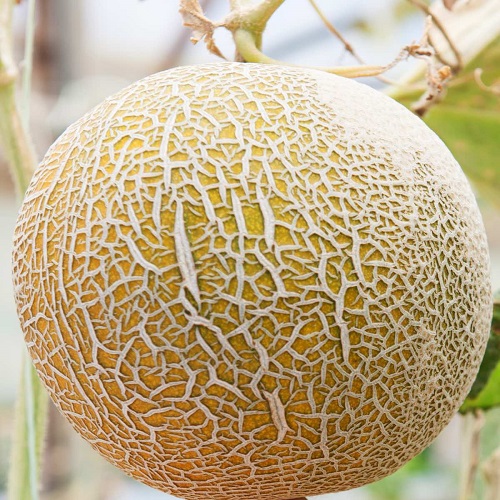How to Tell if A Cantaloupe is Ripe

Cantaloupes, also known as muskmelons, are a quintessential summer fruit cherished for their sweet, juicy flesh and refreshing taste. But there’s a fine art to selecting the perfect cantaloupe – one that’s ripe, succulent, and bursting with flavor. In this comprehensive guide, we’ll delve deep into the nuances of determining the ripeness of a cantaloupe, ensuring you never bite into a disappointing fruit again.
Understanding the Basics
Before we embark on our quest for the ideal cantaloupe, let’s establish some fundamentals. A ripe cantaloupe boasts a symphony of sensory cues that collectively signal its readiness for consumption. These cues encompass visual, olfactory, and tactile indicators, each playing a pivotal role in discerning ripeness.
Visual Cues
The first step in assessing a cantaloupe’s ripeness is through visual inspection. A ripe cantaloupe typically exhibits a vibrant, golden hue with well-defined netting on its rind. The color should be uniform and devoid of any green undertones, indicating full maturation. Additionally, the blossom end – opposite the stem – should yield gently to pressure, suggesting softness and ripeness.
Olfactory Assessment
The sense of smell is a powerful tool in gauging a cantaloupe’s ripeness. Bring the fruit to your nose and take a deep inhale. A ripe cantaloupe emits a fragrant aroma, reminiscent of its sweet, musky flavor. If the scent is faint or absent, the fruit is likely underripe and lacking in flavor. Conversely, an overpowering or fermented odor may signify overripeness or spoilage.
Tactile Evaluation
The final test in our quest for the perfect cantaloupe involves tactile examination. Gently press your thumb against the blossom end of the fruit. A ripe cantaloupe should yield slightly under pressure, indicating softness and juiciness. However, exercise caution not to apply too much force, as an excessively soft texture may signify overripeness or mushiness.
Advanced Techniques for Assessing Ripeness
While the aforementioned methods provide a solid foundation for selecting ripe cantaloupes, seasoned fruit aficionados may employ more advanced techniques to further refine their choices.
Stem-End Inspection
Inspecting the stem end of a cantaloupe can offer valuable insights into its ripeness. A clean, well-defined indentation – known as the stem scar – suggests that the fruit detached naturally from the vine when ripe. Conversely, a green or shaggy stem may indicate premature harvesting, potentially compromising flavor and texture.
Weight Assessment
The weight of a cantaloupe can also serve as a reliable indicator of ripeness. A ripe cantaloupe should feel heavy for its size, indicating ample moisture content and juiciness. Conversely, a lightweight fruit may suggest dehydration or underripeness, resulting in lackluster flavor and texture.
Sound Test
Some experts advocate for the sound test as a means of assessing a cantaloupe’s ripeness. Hold the fruit close to your ear and gently shake it. A ripe cantaloupe should emit a subtle, muffled sound – akin to a soft sloshing – indicating the presence of juicy flesh within. However, this method may require practice and a discerning ear to yield accurate results.
Conclusion
Mastering the art of selecting ripe cantaloupes is a gratifying endeavor that promises sweet rewards. By honing your skills in visual, olfactory, and tactile assessment, you’ll elevate your fruit-picking prowess to new heights, ensuring each bite is a symphony of flavor and juiciness. So the next time you’re perusing the produce aisle, remember these invaluable tips and embark on your quest for the perfect cantaloupe with confidence.



